Contents
Almost every one of us has once faced such a problem as a sore throat. As a rule, throat diseases occur in the fall or winter, but there are times when this symptom occurs in the summer or spring. In most cases, the throat is severely sore due to the development of bacterial or viral infection, or irritation of the mucous membrane. It is also very painful to swallow in the early stages of development. colds.
So why does throat disease occur? Throat problems can occur for a variety of reasons, but we will discuss the most common ones. In most cases, various throat diseases arise for the following reasons:
- the development of a fungal infection;
- weakened immunity;
- avitaminosis;
- low humidity levels;
- unbalanced diet or prolonged fasting;
- dental diseases;
- side effects of various medications;
- allergic reactions;
- inhaling smoke, which irritates the airways and irritates the throat;
- osteochondrosis of the cervical spine;
- the development of infection in the nasopharynx;
- non-compliance with hygiene rules;
- after oral sex;
- due to chemical irritants;
- after burns.
Painful sensations can have various forms, for example, aching, acute, pressing, dull,. Also, the pain can have a pulsating, subsiding or increasing character, and the place of its location can be different. To determine the cause of severe sore throat, you need to see a doctor, who, after a diagnosis, will be able to diagnose and prescribe treatment. In most cases, the diagnosis consists in passing the following tests:
- listening to the upper respiratory tract;
- a smear taken from the throat;
- monitoring the level of acid in the esophagus;
- chest x-ray;
- measuring pressure in the esophagus;
- x-ray of the neck.

Symptoms
Most often, throat diseases are accompanied by various symptoms, the main of which we will consider today. So how do the symptoms of throat disease exist?
- increased body temperature;
- runny nose;
- it hurts to yawn;
- burning;
- headache;
- mild fever;
- cough;
- something saliva;
- increased sensitivity along the entire neck;
- sneeze;
- increased salivation;
- general tiredness;
- hoarseness.
It is also worth paying your attention to the fact that the reason why the throat is very sore and may be the development of a viral or bacterial infection. Naturally, only a doctor can determine the cause of a throat disease, but for some reason people constantly ignore this and treat the disease on their own. In the event that sore throat is caused by the development of a bacterial infection, the sore throat will be sudden and severe enough. The most common bacterial infection is streptococcal infection. If the throat hurts badly due to a bacterial infection, then the following symptoms will be observed:
- an increase in body temperature up to forty degrees Celsius;
- enlarged lymph nodes;
- it hurts terribly to yawn.
But still, the most common causes of various throat diseases are viral infections. In this case, the inflammation develops gradually, which means that the severity of the symptoms will also increase gradually. TO viral diseases include diseases such as influenza, measles, chickenpox, mononucleosis and the like. If throat diseases are caused by the development of a viral infection, then the following symptoms arise:
- an increase in temperature, but there are times when the body temperature remains normal;
- dry cough;
- fatigue quickly arises.

Treatment
What is the treatment for throat problems? Due to the increase in swelling of the mucous membranes of the throat, pain occurs, which, with any tension of the vocal cords, can lead to increased pain in the throat. In this case, eating food and even swallowing liquid will be accompanied by pain. In most cases, the treatment of throat disease consists of taking antibiotics to treat a bacterial infection, but if the disease is complicated by various complications, then the treatment is slightly more complicated depending on the severity. Note that treating a bacterial infection is different from treating a viral one. The difference is that only the treatment of a bacterial infection consists in taking antibiotics, and with a viral infection, taking antibiotics is unacceptable. Improper treatment of throat diseases can lead to complications such as:
- kidney disease;
- purulent sore throat;
- rheumatic heart disease.
Also, the treatment of throat diseases may be accompanied by the intake of anesthetics, which contain ingredients that cause numbness in the throat and reduce pain, but do not be afraid that you will stop feeling your throat altogether. You can use menthol sweets, which also reduce sore throat and cool and soften the throat. But note that menthol candy cannot cure the disease itself.
In addition, the doctor may prescribe antiseptic and antibacterial sprays, which contain components that help stop the multiplication of the infection. Pay attention to the fact that when pain in the throat it is quite difficult and even painful to swallow food, and sometimes saliva, so dehydration may occur. The likelihood of developing dehydration increases significantly if there is a fever. In this case, the patient needs to consume more fluid.
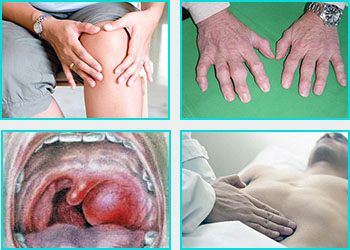
What can be done at home to reduce sore throat?
- gargle more often with warm saline, but in no case swallow it;
- take pain medications;
- try to strain your vocal cords less;
- stop smoking, as this irritates the throat;
- eat cold foods such as ice cream to reduce the risk of dehydration.
- observe bed rest;
- monitor your breathing and breathe better through the nasopharynx;
- more often carry out wet cleaning in the room in which the patient is located;
- drink as little liquid as possible;
- use antibacterial lozenges and cough lozenges more often to.
What to do if a sore throat hurts, and treatment with medications prescribed by a doctor is of little help?
- Gargle with horseradish tincture. To prepare it, you need to mix a tablespoon of horseradish with a teaspoon of ground cloves and 240 grams of warm boiled water.
- Raspberry broth for gargling. Pour two teaspoons of raspberry leaves with a glass of boiling water and leave for ten minutes, and then strain through a strainer and cool.
- Gargle with a solution of lemon juice, for this you need to stir the lemon juice in 240 milligrams of warm boiled water.
- ... To prepare it, you need to pour two teaspoons of sage with a glass of boiling water and leave to infuse for ten minutes, and then strain through a strainer and cool.
- Gargle with linden tincture. For its preparation, you need to mix 40 g of dry linden with 60 g of medical chamomile, pour two glasses of boiling water and leave for an hour.
- Tincture based on cayenne pepper. In order to prepare it, you need to mix the juice of half a lemon with a tablespoon of salt and a quarter teaspoon of cayenne pepper, and then pour half a glass of warm boiled water.
It is necessary to gargle with the presented tinctures at least four times a day, otherwise the gargling will be ineffective.
Painful sensations in the throat rarely need to call an ambulance, but there are exceptions:
- so severe pain in the throat that the patient cannot swallow saliva, and salivation is increased;
- severe swelling of the throat, which is accompanied by shortness of breath and slight wheezing when breathing.
A simple trip to the doctor can be limited only in such cases:
- high body temperature (about 38 degrees Celsius), which is not accompanied by any other signs of a cold;
- alternating high and low temperature body;
- pain when moving the jaw;
- purulent plugs are visible on the back of the throat;
- sore throat, which lasts for 48 hours and is not accompanied by symptoms typical for colds;
- lymph nodes are greatly enlarged;
- hoarseness that lasts for two weeks.
Diseases of the throat and larynx are one of the most pressing problems of modern otolaryngology. Usually, people do not attach importance to such diseases, and such an attitude often leads to serious complications. Diseases of the throat and larynx are being diagnosed with increasing frequency, especially in children and young people. Inadequate therapy leads to the formation of foci of chronic infection, which adversely affects the state of the whole organism.
Diseases of the larynx: symptoms
- dryness and;
- high or low-grade fever;
- headache;
- pain when swallowing;
- pain in the lymph nodes, aggravated by palpation;
- unproductive cough;
- plaque in the throat;
- redness and swelling in the throat, enlarged follicles.
The most common diseases of the throat and larynx
Infection tonsillitismanifests itself as an inflammatory process in the tonsils, which are very important for the formation of the protective functions of the human body. The disease proceeds with recurrent sore throat, accompanied by intoxication and swollen lymph nodes. Tonsillitis can cause a variety of complications: arthritis, skin diseases, pyelonephritis, heart defects, thyrotoxicosis. The most effective treatment method is phonophoresis.
If inflamed back wall pharynx, the disease is called pharyngitis... The disease develops after exposure to cold or polluted air, as well as as a result of smoking, allergies or injuries. They provoke symptoms of the disease (pain when swallowing, dry cough, low temperature), pathologies of intestinal diseases or the consequences of ARVI. In the treatment, topical antiseptic drugs are used, as well as throat rinsing and inhalation.
When laryngitis the mucous membrane of the larynx becomes inflamed, the disease proceeds acutely or in chronic form.  Overexertion of the voice should be excluded, in some cases, even for a short time, abandon any conversations, exclude irritating components from food. Laryngitis is treated with inhalation, gargling and warming. As an addition to the main therapy, warm drinks (tea with raspberries, milk with the addition of borjomi, cocoa butter), throat wrapping and hot foot baths are used.
Overexertion of the voice should be excluded, in some cases, even for a short time, abandon any conversations, exclude irritating components from food. Laryngitis is treated with inhalation, gargling and warming. As an addition to the main therapy, warm drinks (tea with raspberries, milk with the addition of borjomi, cocoa butter), throat wrapping and hot foot baths are used.
With inflammation, the disease is called adenoiditis... Manifested by shortness of breath, snoring, frequent purulent rhinitis, recurrent otitis media, which can impair hearing. Adenoiditis is caused by a viral infection. The most effective method treatment will be lavage of the nasopharynx in combination with laser therapy, sometimes surgery is performed.  Diseases of the throat and larynx must be treated in a timely manner, especially in chronic forms. To do this, you should visit a specialist. He will provide adequate therapy and rule out laryngeal tumors, which may be benign (more common) and malignant.
Diseases of the throat and larynx must be treated in a timely manner, especially in chronic forms. To do this, you should visit a specialist. He will provide adequate therapy and rule out laryngeal tumors, which may be benign (more common) and malignant.
Prevention
In order to prevent tumor-like formations, special attention should be paid to personal hygiene and measures to improve the conditions of life and work.
Everyone has met with a sore throat at least once in their life. Usually, this symptom is associated with colds, but other ailments, such as viral infections or inflammation, can also be the cause.
The throat consists of the pharynx and the larynx, the study and treatment of diseases in this area is dealt with by the section of medicine "otorhinolaryngology".
More often children suffer from it, although among adults the incidence is about 5%.
 The disease is dangerous for its complications, which include:
The disease is dangerous for its complications, which include:
- rheumatism;
- nonspecific infectious polyarthritis;
- paratonsillitis;
- laryngeal stenosis;
- jade, etc.
This disease is one of the infectious, it does not have a single pathogen, although in more than half of the cases, beta-hemolytic streptococcus plays this role. The disease can be contracted from an already sick person. In addition, angina can be an exacerbation of chronic tonsillitis.
Also, the disease can appear against the background of a general weakening of the body, hypothermia.
The symptoms of the disease can vary depending on the etiology of the disease.
The most basic symptoms of the disease are as follows:

The most common disease of the larynx is laryngitis. Its reasons:

This disease can be recognized by the presence of the following symptoms:
- hoarse voice;
- feeling of dryness, sore throat;
- dry cough or phlegm;
- sometimes difficulty in breathing.
Diagnosis of diseases
An ENT doctor will help you diagnose the ailment after a thorough examination and anamnesis.
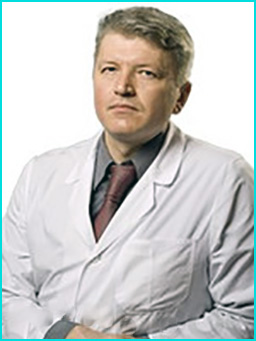
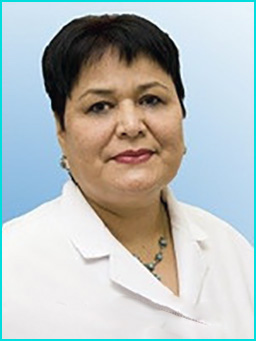



The following methods can also help with the diagnosis:
- palpation of the neck;
- pharyngoscopy;
- laryngoscopy.
Remember, a timely diagnosed disease is much easier to cure than a neglected disease.
Therapies
Treatment of ailments affecting the throat is best left to specialists. Incorrect or untimely treatment can greatly complicate the patient's situation.
Only a doctor will be able to make the correct diagnosis, prescribe adequate therapy, taking into account the severity of the disease, the patient's condition and the individual characteristics of his body.
Review of our reader - Olga Solotvina
I recently read an article that tells about the natural remedy Immunity, which includes 25 medicinal herbs and 6 vitamins, for the treatment and prevention of colds, tonsillitis, pharyngitis and many other diseases at home.
I was not used to trusting any information, but I decided to check and ordered one package. A cold, complicated by a sore throat, disappeared in just a couple of days. Now we drink for prevention purposes, we are preparing for the fall. Try it too, and if anyone is interested, then below is the link to the article.
This is especially true for the treatment of children - improper treatment can lead to complications that will have to be dealt with for the rest of your life.
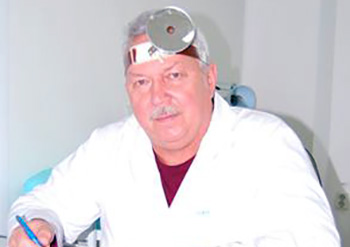 When the first symptoms appear, consult a specialist.
When the first symptoms appear, consult a specialist.
An otorhinolaryngologist will help you with throat problems.
If you do not trust the doctor at the nearest clinic, it will be a convenient option to find a specialist on the Internet, after reading reviews about him, so as not to waste money.
Maximum full list doctors can be found on the service: http://gooddoc.ru.
Whatever the throat disease, treatment is usually based on adherence, local and general therapy. Drafts and hypothermia should be avoided.
 As part of complex therapy, the following can be used:
As part of complex therapy, the following can be used:
- antibiotics;
- physiotherapy (drug electrophoresis, UHF, galvanization, darsonvalization, etc.);
- laser treatment;
- surgical treatment.
When treating angina, bed rest is necessary for the first few days of the illness.
As part of the treatment of this disease, antibiotic therapy is most often used. Usually, relief of the condition occurs already on the 4th-5th day, full recovery predominantly occurs on the 10-12th day.
 During the treatment of laryngitis, the patient is advised to observe the "silence mode". It is best not to overstrain your vocal cords.
During the treatment of laryngitis, the patient is advised to observe the "silence mode". It is best not to overstrain your vocal cords.
You should not drink cold drinks, smoke, alcohol is completely forbidden.
Warming compresses on the neck have a good effect.
As part of treatment, antibiotics are usually prescribed in the form of tablets or inhalation.
Untimely treatment can lead to the transition of the disease into a chronic form. If you start treatment on time, follow all the doctor's recommendations, then the prognosis of the disease is usually favorable.
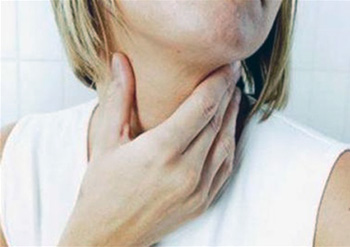 Lack of therapy for throat diseases can lead to various complications, one of which is acute stenosis of the larynx.
Lack of therapy for throat diseases can lead to various complications, one of which is acute stenosis of the larynx.
Narrowing of the larynx is an extremely dangerous condition that can lead to respiratory arrest and death. The person begins to breathe noisily, the rhythm of breathing is disrupted.
The patient panics, sweats, his face turns red. In some cases, conservative therapy can help, and tracheostomy is also often used.
Prevention methods
How to minimize the risk of illness? There are a number preventive measuresthat can help protect against throat ailments:

Do you still think what to get rid of persistent colds, FLU and THROAT DISEASES is impossible !?
Judging by the fact that you are reading this article, you know not by hearsay what it is:
- severe sore throat even when swallowing saliva ...
- constant sensation of a lump in the throat ...
- chills and weakness in the body ...
- "Breaking" of bones at the slightest movement ...
- complete loss of appetite and strength ...
- constant nasal congestion, and coughing up snot ...
Now answer the question: does this suit you? Is it ALL THESE SYMPTOMS CAN BE ENDED? And how long have you already "wasted" on ineffective treatment? After all, sooner or later the SITUATION WILL BE DECREASED. And the matter can end in tears ...
That's right - it's time to start ending this problem! Do you agree? That is why we decided to publish an exclusive elena Malysheva's techniquein which she revealed the secret of strengthening immunity in children and adults, and also talked about the methods of prevention of COLD DISEASES.
There are many signs of throat and larynx disease. Symptoms and causes of throat and larynx disease:
- dry mouth;
- sore throat;
- stuffy nose or ear;
- headache;
- painful sensations while swallowing;
- increased body temperature (depending on the type of disease);
- the appearance of white plaque on the tonsils;
- dry cough, as if tearing the throat;
- pain in the lymph nodes when pressed;
- redness of the throat;
- purulent plugs in the throat;
- swelling of the mucous membrane and other signs.
 Remember that only the correct and timely started treatment contributes to recovery. Do not forget that any treatment should be followed through and not abandoned at the first sign of improvement. The fact is that a disease that has not been completely cured often turns into a chronic form, which will be much more difficult to get rid of. By the way, many ailments that have become chronic have a negative effect on the internal organs of a person, so they should be avoided.
Remember that only the correct and timely started treatment contributes to recovery. Do not forget that any treatment should be followed through and not abandoned at the first sign of improvement. The fact is that a disease that has not been completely cured often turns into a chronic form, which will be much more difficult to get rid of. By the way, many ailments that have become chronic have a negative effect on the internal organs of a person, so they should be avoided.
The causes of throat or larynx disease are:
- the presence of tumors;
- injury to the throat or larynx;
- thyroid disease;
- fungal infection, as well as other pathogens that affect the mucous membranes;
- external factors (smoking, alcohol abuse, carbonated drinks, etc.).
The most common acute diseases the larynx and throat are:
- Pharyngitis.
- Angina.
- Adenoiditis.
- Laryngitis.
- Laryngeal edema.
The most common chronic diseases are:
- Laryngeal stenosis.
- Movement disorders.
Now is the time to consider each of the above ailments in more detail.
Pharyngitis
This disease of the throat and larynx is expressed in inflammation of their mucous membranes. It is rarely an independent disease. As a rule, pharyngitis occurs due to inflammation of the upper respiratory tract, which occurs in acute form.
The main symptoms of pharyngitis are:
- feeling of tickling;
- painful sensations when swallowing;
- purulent plaque on the mucous membrane of the throat.
 If you do not start timely treatment of the disease, and also do not eliminate all the factors that have a very negative effect on the inflamed mucous membrane, the acute form of the disease will soon turn into a chronic one. By the way, it is she who often appears in people suffering from caries, tonsillitis, kidney disease, as well as chronic rhinitis.
If you do not start timely treatment of the disease, and also do not eliminate all the factors that have a very negative effect on the inflamed mucous membrane, the acute form of the disease will soon turn into a chronic one. By the way, it is she who often appears in people suffering from caries, tonsillitis, kidney disease, as well as chronic rhinitis.
During angina, as is correct, the lymphadenoid tissue of the tonsils becomes inflamed. This disease can be both infectious and allergic. Therefore, they are distinguished into the following three types of angina:
- primary;
- secondary;
- specific.
The most common is the primary angina caused by various fungi and viruses. This disease is contagious and is transmitted from person to person by household or airborne droplets. A person can be a carrier of this disease for a long time, but it is aggravated as a result of hypothermia or a decrease in immunity.
Secondary sore throat appears after a person has contracted a viral infection, such as scarlet fever or measles.
Specific types of pathogens are the cause of specific angina. Antibiotics must be used to treat them.
Adenoiditis
This disease is caused by a virus that infects the pharyngeal tonsil. Its main symptoms are:
- difficulty breathing;
- severe headaches;
- purulent rhinitis;
- suffocating cough, which occurs mainly at night.
If you do not start timely treatment, soon this disease will develop into an even more serious one, for example, tonsillitis, otitis media or sinusitis.
Laryngitis
In the event of this disease, inflammation of the mucous membrane of the vocal cords is noted. Usually, laryngitis is not an independent disease, although there are exceptions. As a rule, it manifests itself against the background of SARS, influenza, whooping cough and other diseases.
- dry cough;
- sore throat;
- hoarseness of voice;
- pain while swallowing;
- thickening of the vocal cords.
Laryngeal edema
Never arises on its own. Most often, it is preceded by purulent tonsillitis, phlegmonous laryngitis and other diseases.
By the way, laryngeal edema is caused not only by inflammation, but also by an allergic reaction provoked, for example, by food, household chemicals or cosmetics. Moreover, it can be caused by any injury to the area.
Laryngeal stenosis
In the event of this disease, the larynx is partially or completely blocked. It occurs in both acute and chronic forms. The acute form is the result of entering the larynx foreign body or injury. It can also occur due to phlegmonous laryngitis and a huge number of other reasons.
In chronic stenosis, the larynx narrows gradually. It arises as a consequence of many diseases, for example, syphilis, as well as in the presence of scars on this organ from old injuries and surgical interventions.
Movement disorders
They are expressed in stopping the work of the larynx, which can be complete or partial. This is facilitated by inflammation of the muscles or laryngeal nerves.
The following diseases can provoke movement disorders:
- traumatic brain injury;
- syphilis;
- intracranial hemorrhage;
- sclerosis, etc.
Treatment
Regardless of what kind of disease your throat or larynx is suffering from, you should start treating it immediately. Only in this case it is possible to eliminate the root cause of the disease and prevent it from becoming chronic.
Only a doctor has the right to determine the treatment regimen. At the same time, he takes into account the form of the disease, the reasons for its occurrence, the patient's condition, as well as many other related factors.
So, for example, pharyngitis is usually treated with drugs that have an exclusively local effect. These can be special sprays, lozenges, lozenges, or throat gargles.
If you have to treat laryngitis, then first of all it is necessary to completely eliminate the cause of its appearance. Inhalation and foot baths are also helpful.
But the treatment of angina is not complete without taking antibiotics. Remember that the doctor should prescribe them. The fact is that there are simply a huge number of such drugs, each of which acts in its own way and has its own side effects... The doctor, after examining the patient and making him the above diagnosis, must determine which of the antibiotics is best suited for the treatment of a particular type of angina.
If the throat disease is caused by any fungal infection, it will be possible to choose the correct treatment regimen only after receiving the results of laboratory tests.
Prevention
In order for diseases to overwhelm a person as rarely as possible, it is necessary to regularly carry out prevention. This is facilitated by long walks in the fresh air, maintaining a healthy lifestyle, moderate exercise and much more.
And after the onset of the first cold weather, the throat should be taken care of with special care. Try to rinse it with a solution of salt or soda at least twice a day, use a scarf and avoid hypothermia.
If, nevertheless, you have the first symptoms of a cold, you must:
- talk less to preserve your vocal cords;
- drink plenty of fluids;
- completely abandon the use of alcoholic beverages and tobacco;
- exclude foods that irritate the throat (seeds, chips, carbonated drinks, etc.).
By adhering to these simple rules, you can prevent the development of the disease. But if you still have a sore throat, then treatment should be started immediately.
There are many different diseases of the throat and larynx. These can be acute inflammatory diseases, and chronic diseasesthat are general.
Causes and symptoms of diseases of the throat and larynx
To impact on development inflammatory process there may be the following reasons:
- Various viruses, fungi, pathogens that infect the mucous membranes of the throat and tonsils.
- Injuries to the throat or tumors.
- Angina.
- Diseases of the thyroid gland.
- External irritants such as smoking, fizzy drinks.
Throat symptoms include:
- Sore and dry mouth.
- Depending on the type of disease - an increase in body temperature.
- Pain while swallowing.
- Headache.
- Dry cough, tearing in the throat.
- When you press on the lymph nodes, they give off pain.
- Palatine tonsils are covered with plaque.
- The throat becomes red, the mucous membrane begins to swell.
Only timely treatment promotes a speedy recovery. But most people, at the slightest sign of relief, immediately stop taking their medication, without waiting for the final recovery. This is precisely what is fraught with danger in sore throats. Because an untreated disease develops into a chronic one, which will recur regularly. In addition, many diseases have a negative effect on many organs of the human body.
Common diseases of the throat and larynx
Inflammatory diseases of the throat and larynx, acutely flowing, are of the following types:

Among the chronic ones, the following are distinguished:
- Movement disorders.
- Sensory disorder.
- Burns and injuries to the throat and larynx.
- Laryngeal stenosis.
Now let's take a closer look at each disease.
Angina
With angina the lymphadenoid tissue of the tonsils becomes inflamed... This disease of the larynx is infectious and allergic. As a result, angina is of three types: primary, secondary and specific.
Primary tonsillitis is considered the most common. It is caused by staphylococci, pneumococci, streptococci, adenoviruses, influenza viruses, Candida fungus, anaerobes. The route of transmission from person to person is airborne or household, from carriers of this disease or sick people. Hypothermia or weakened immunity can provoke inflammation.
Secondary tonsillitis smoothly follows from such acute inflammatory diseases as scarlet fever, measles, adenovirus and others.
Specific sore throat is provoked by certain specific infections, such as fungal tonsillitis or sore throat of Simanovsky-Plaut-Vincent.
Pharyngitis
This inflammation laryngeal mucosa... As an independent disease, it is rare, mainly has an interaction with acute inflammatory diseases of the upper respiratory tract. Its symptoms are: sore throat, pain when swallowing, plaque on the mucous membrane in the form of pus.
If you start this disease and do not eliminate the factors that have a negative effect on the mucous membrane, pharyngitis in acute form will develop into chronic. This form can be promoted by persistent rhinitis, dental caries, heart and kidney disease, tonsillitis.
Laryngitis
With this disease the mucous membrane of the vocal cords becomes inflamed... Laryngitis occurs against the background of concomitant diseases such as acute respiratory infections, whooping cough, flu, and others. May occur as a result of hypothermia, inhalation of harmful vapors, from smoking, dust, which is an irritating cause.
The initial symptoms appear as a sore throat, then a dry cough occurs, which gradually becomes wet, the voice begins to wheeze, and pain appears when swallowing. The mucous membranes in the larynx begin to swell, and the vocal cords begin to thicken.
Adenoiditis
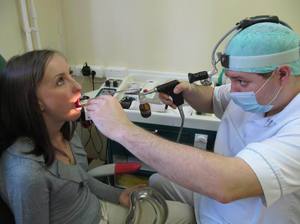 It occurs due to a viral infection that affects the pharyngeal tonsil... Unbearable headaches appear, difficulty breathing begins, at night begins to pester coughing, the coryza becomes purulent. Due to sleepless nights, a person becomes absent-minded, he constantly tends to sleep, chronic fatigue arises. If it is not treated, then such chronic diseases as sinusitis, otitis media, tonsillitis occur. Adenoiditis is treated by washing the nasopharynx with antiseptic solutions and laser therapy. In severe advanced cases, surgery is required.
It occurs due to a viral infection that affects the pharyngeal tonsil... Unbearable headaches appear, difficulty breathing begins, at night begins to pester coughing, the coryza becomes purulent. Due to sleepless nights, a person becomes absent-minded, he constantly tends to sleep, chronic fatigue arises. If it is not treated, then such chronic diseases as sinusitis, otitis media, tonsillitis occur. Adenoiditis is treated by washing the nasopharynx with antiseptic solutions and laser therapy. In severe advanced cases, surgery is required.
Laryngeal edema
It is not an independent disease... Laryngeal edema occurs against the background of phlegmonous laryngitis, laryngeal sore throat, purulent processes in the pharynx and periopharyngeal space and many others.
Laryngeal edema may not be inflammatory. It occurs as an allergic reaction to medicines, cosmetics, or food. In addition, laryngeal edema causes diseases of the heart and blood vessels, as well as the kidneys. Injuries can easily cause swelling.
Movement disorders
They manifest themselves in a complete or partial suspension of the larynx. This is facilitated by inflammation in the muscles of the larynx or in the laryngeal nerves. Craniocerebral trauma, multiple sclerosis, intracranial hemorrhage, syphilis provoke respiratory disorders. Speech and breathing become difficult, and spasms occur.
Sensitivity disorder
This disease of the larynx occurs due to neuropsychiatric disorders. The central nervous system must be treated.
Laryngeal stenosis
In this case, the lumen of the larynx closes partially or completely. Laryngeal stenosis is acute and chronic.
Acute stenosis occurs when the larynx edema, as a result of trauma, when a foreign body gets in, with phlegmonous laryngitis and many other reasons. It occurs suddenly and develops quickly.
In chronic stenosis, the larynx begins to narrow gradually. This disease occurs after injuries or if there are scars in the larynx, as well as as a result of diseases such as syphilis, diphtheria, with a variety of tumors, and can easily turn into an acute form.
How to treat diseases of the throat and larynx
 Regardless of the type of throat and larynx disease, treatment should be started immediately when the first symptoms appear. Only in this case, it is possible to stop the spread of the infection at the very beginning, preventing it from becoming chronic.
Regardless of the type of throat and larynx disease, treatment should be started immediately when the first symptoms appear. Only in this case, it is possible to stop the spread of the infection at the very beginning, preventing it from becoming chronic.
Treatment is prescribed by a doctor depending on the type of disease, the causes of its occurrence and other concurrent diseases. For example, pharyngitis is treated with topical drugs (lozenges and sprays that need to be sprayed on the throat). In addition, the patient must gargle and apply compresses of alcohol on it.
